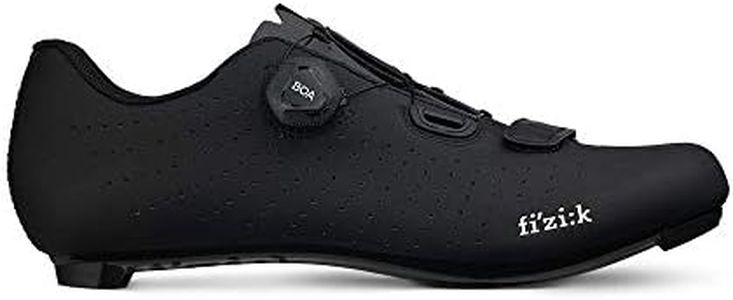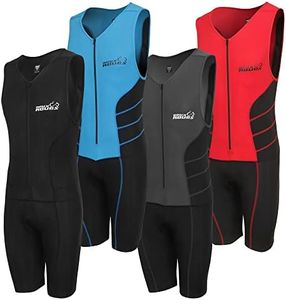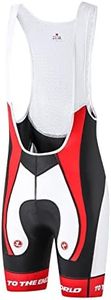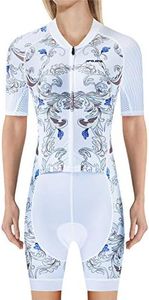We Use CookiesWe use cookies to enhance the security, performance,
functionality and for analytical and promotional activities. By continuing to browse this site you
are agreeing to our privacy policy
5 Best Triathlon Bikes
From leading brands and best sellers available on the web.By clicking on a link to a third party's website, log data is shared with that third party.
Buying Guide for the Best Triathlon Bikes
Choosing the right triathlon bike is all about matching your riding style, fitness goals, and the type of races or rides you plan to tackle. Think carefully about what matters most for your performance and comfort, as triathlon bikes are designed to offer speed and efficiency, but require the right fit and features to maximize these benefits. You’ll want a bike that supports your aerodynamic needs, is comfortable for long distances, and suits the course profiles you’ll encounter. Don't get too caught up in fancy features you may not need; focus on what will genuinely support your training and race-day success.Frame MaterialThe frame material is what your bike is built from, commonly carbon fiber, aluminum, or sometimes titanium. This matters because different materials affect the bike's weight, comfort, stiffness, and durability. Carbon fiber tends to be lighter and more aerodynamic, often leading to higher speeds and a smoother ride, while aluminum is typically more affordable and durable but can be a little heavier and less forgiving on rough roads. If you're racing seriously or want maximum comfort and performance, carbon might be best; for beginners or those who prioritize toughness for training, aluminum could be enough.
AerodynamicsAerodynamics refers to how well the bike cuts through the air, which can make a big difference in your speed and efficiency. Features like aero-shaped tubing, integrated storage, and hidden cables can all help reduce wind resistance. Highly aerodynamic bikes are great for serious racers and flat courses, while those just starting or riding on hilly, technical routes may not need to go all-in on aero features. Think about how much time you spend racing versus training, and if you're looking to shave off every possible second, lean toward more aerodynamic designs.
Geometry and FitGeometry and fit define the size, shape, and riding position of the bike, which is crucial for comfort, power, and injury prevention. Triathlon bikes feature a steeper seat tube angle and longer reach to put you in a more aerodynamic position. The right geometry depends on your flexibility, body proportions, and how aggressive your riding style is. If you’re more flexible and chasing fast times, a more aggressive position can help; if comfort over long distances or injury prevention is a concern, aim for a less extreme fit. Always prioritize proper fitting—ideally with a professional fitting session—to make the most of your bike.
Drivetrain and GearingDrivetrain and gearing describe the bike's components related to shifting and pedaling power. Having the right gears lets you maintain a comfortable cadence whether you're on flat roads or climbing hills. Triathlon bikes can offer 1x (single front chainring) or 2x setups (double chainrings), and gear ranges that suit races that are mostly flat or include rolling hills. If you ride in hilly areas or want versatility for different race conditions, look for a wider gear range; if your courses are flat and speed is your focus, a tighter, race-oriented setup might suit you better.
Integrated Storage and HydrationIntegrated storage and hydration means how and where your bike allows you to keep nutrition, repair tools, and hydration systems handy. Some bikes come with built-in compartments or mounts for bottles, gels, and other essentials, often in locations that are the most aerodynamic. If you plan long races or want quick access to your fuel and tools without breaking your riding position, look for good integration. For shorter events or training, this may be a lower priority, but still handy for convenience.
Brakes (Rim vs Disc)The braking system on a triathlon bike can be either rim brakes or disc brakes. Rim brakes are lighter and have been the traditional choice, but disc brakes offer more stopping power, especially in wet or variable conditions. If you’re riding in places where you might face rain or steep descents, disc brakes can be reassuring. For flat, dry conditions and if you value a lighter, simpler system, rim brakes still do the job well.





